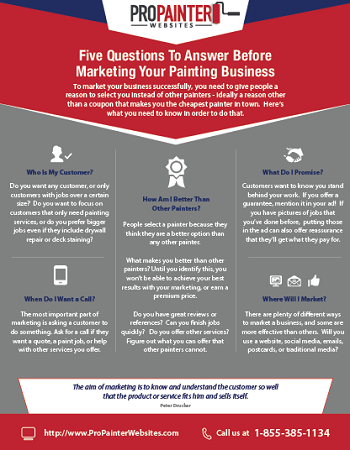Understand How Seasonal Conditions Affect The Success Of Business Outside Paint And Find Out The Optimal Periods To Assure Long-Lasting End Results For Your Project
Understand How Seasonal Conditions Affect The Success Of Business Outside Paint And Find Out The Optimal Periods To Assure Long-Lasting End Results For Your Project
Blog Article
Web Content Author-McLamb Skafte
When you're intending a commercial external paint project, seasonal factors can make or break your results. You'll intend to think about exactly how temperature level and humidity effect paint application and drying out times. Choosing the ideal period can guarantee your paint sticks correctly and lasts much longer. However which seasons are truly the most effective for this type of job? Let's explore the key elements that can impact your project's success.
The Effect of Temperature Level on Paint Application
When you're planning an industrial outside painting task, the temperature level can significantly influence exactly how well the paint sticks and dries out.
Preferably, you wish to paint when temperature levels vary in between 50 ° F and 85 ° F. If it's also chilly, the paint might not cure correctly, leading to issues like peeling or splitting.
On the other hand, if it's as well hot, the paint can dry out also rapidly, stopping correct bond and resulting in an unequal finish.
You must likewise think about the time of day; early morning or late afternoon uses cooler temperatures, which can be more beneficial.
Constantly check the supplier's suggestions for the particular paint you're using, as they frequently give advice on the optimal temperature range for optimal outcomes.
Moisture and Its Result on Drying Times
Temperature isn't the only ecological aspect that affects your business exterior paint project; humidity plays a substantial duty also. High moisture levels can decrease drying times dramatically, affecting the overall quality of your paint task.
When the air is filled with dampness, the paint takes longer to heal, which can bring about concerns like poor bond and a higher danger of mold growth. If you're repainting on an especially humid day, be gotten ready for extensive delay times between layers.
It's essential to keep an eye on regional weather and strategy accordingly. Ideally, go for moisture levels between 40% and 70% for optimum drying.
Keeping these factors in mind guarantees your project stays on track and supplies a long-term coating.
Best Seasons for Commercial Outside Paint Projects
What's the best season for your business outside paint projects?
click here to find out more and very early loss are commonly your best bets. During these periods, temperature levels are moderate, and humidity degrees are typically lower, developing ideal problems for paint application and drying.
Avoid summertime's intense heat, which can create paint to dry too rapidly, causing bad attachment and coating. Likewise, average paint job cost per square foot can hinder correct drying and treating, taking the chance of the long life of your paint task.
Aim for days with temperatures in between 50 ° F and 85 ° F for optimal outcomes. Keep in mind to examine the neighborhood weather report for rainfall, as wet problems can wreck your task.
Preparation around these elements ensures your paint project runs efficiently and lasts longer.
Verdict
In conclusion, planning your commercial external paint projects around seasonal factors to consider can make a significant difference in the result. By organizing job during the suitable temperatures and moisture degrees, you'll ensure better attachment and drying out times. Keep in mind to watch on regional weather prediction and pick the right time of year-- springtime and early autumn are your best bets. Taking these actions will certainly help you accomplish a durable and professional coating that lasts.
